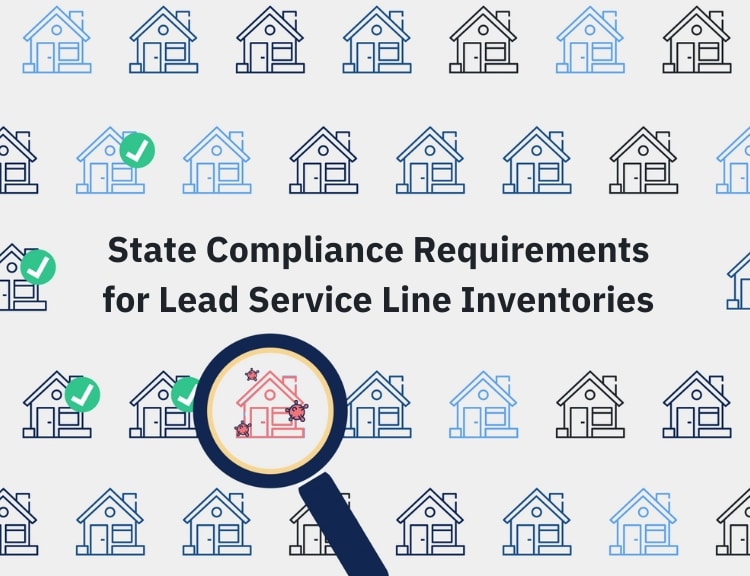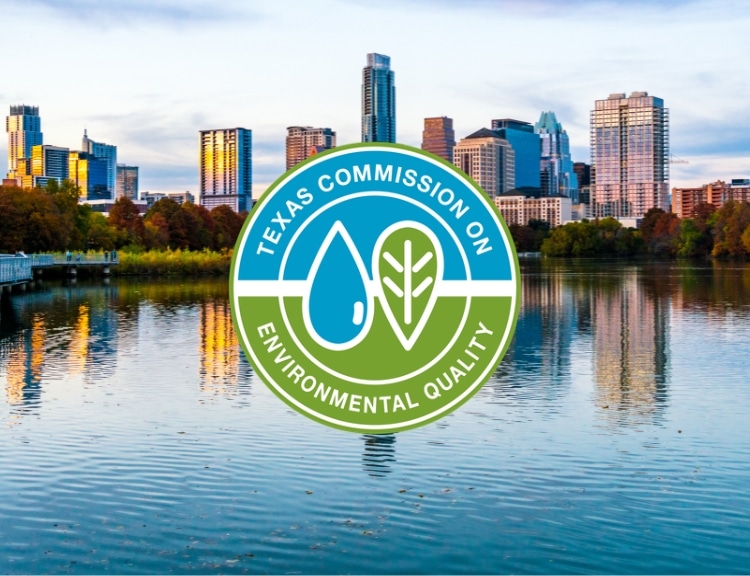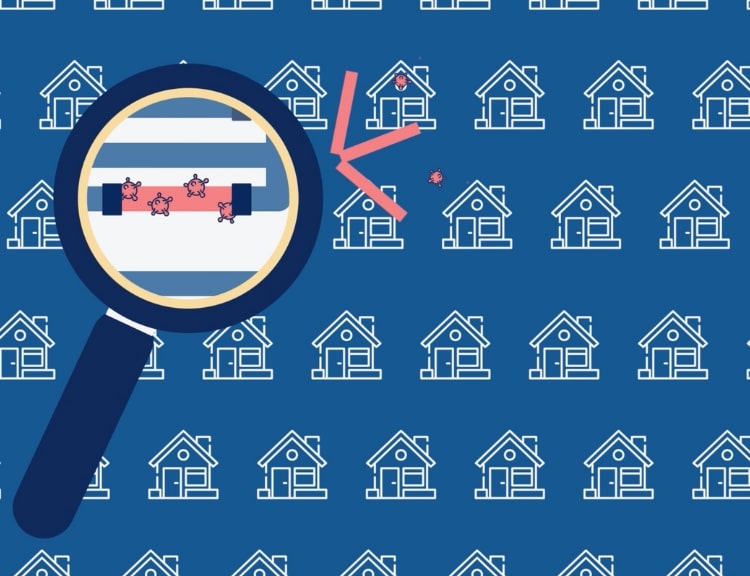We talk a lot about ‘compliance’ but the reality is that compliance is complicated and changes over time. This series breaks down compliance requirements across the LCR and the proposed LCRI to help you understand the who, what, and when of compliance.
We started this series discussing the LCRR Lead Service Line Inventory compliance requirement for October 16, 2024. In this post, we shared that “some states have adopted the EPA template exactly while other states have modified the template to meet additional state-specific requirements.”
We’ve recently had a lot of customer questions and conversations about state-specific compliance requirements so, before moving on to explore other topics, we want to explore state-specific compliance requirements vs EPA compliance requirements for October 16, 2024.
Why do state and federal compliance requirements differ?
In a nutshell, the EPA intentionally left space in the Guidance for Developing and Maintaining a Service Line Inventory for state regulators to make choices about how to define and implement the LCRR guidance, as long as minimal LCRR compliance requirements are met.
The EPA’s guidance sets specific, but minimal, compliance requirements for Lead Service Line Inventories. It says that every water system must complete a historical records review and prepare an inventory (here’s the EPA template) that includes all water system- and customer-owned portions of every service line with a specific material classification for every service line as lead, galvanized-requiring-replacement*, non-lead, or lead status unknown.
Beyond that, the EPA recommends multiple approaches that states can choose to use (or not) in their interpretation and implementation of the LCRR to guide water systems to define service line material and submit state-compliant LSLIs. For example, the EPA’s LCRR guidance includes predictive modeling as an approved Service Line Investigation Method (aka a method for identifying service line material). However, the EPA left it up to each state to make further tactical decisions around expectations for the use of predictive modeling for LSLI (more on this below).
In what ways can state and federal compliance requirements differ?
Each state’s regulatory agency has the ability to release additional state-specific compliance guidance for water system’s operating in that state, as long as state compliance requirements meet or exceed the requirements included in the EPA’s LCRR guidance.
Broadly, state regulatory requirements may differ from or exceed the EPA’s requirements in the following areas:
- Defining LSLI vocabulary
Some states have released LSLI vocabulary definitions that are slightly different from EPA’s definition for terms such as lead service line, lead connectors/goosenecks/pig tails/solder, or galvanized requirement replacement. For example, the EPA’s definition of a ‘lead service line’ is any line that is made of lead, whereas the New Jersey Department of Environmental Protection (NJDEP) has a broader definition that includes any service line that is lead, galvanized, or has a lead gooseneck.
- Data & Template Required for LSLI
The EPA’s LSLI template requires four pieces of data for each service line: the service line address, service line material for the water system-owned portion of the line, service line material for the customer-owned portion of the line, and the service line material classification for the full service line. In addition the EPA template includes other optional data for states to collect such as Unique ID for each service line, service line installation date, service line size, and more. Beyond that, states can choose to collect additional data they deem relevant for the LSLI; for example, the Ohio Environmental Protection Agency (OEPA) has a unique template format that requires water systems to submit Unique ID, address information separated into multiple columns, and historical lead status for the water system-owned portion of the service line.
- Predictive Modeling Usage
As mentioned above, the EPA’s LCRR guidance includes predictive modeling as an approved Service Line Investigation Method (aka a method for identifying service line material). However, states are taking different approaches to the method for allowing the use of predictive modeling.
For example, California DDW requires water systems to submit a plan and receive pre-approval before using predictive modeling or statistical methods in their LSLI; DDW also outlines requirements for stratified sampling to ensure high confidence in the model’s results. North Carolina Department of Environmental Quality (NCDEQ) similarly requires pre-submission of a plan that highlights the inventory development process and utilized statistical methods, but does not require stratified sampling. And in Ohio, the Ohio EPA (OEPA) recently stated that water systems can use predictive modeling for service line material identification but do not need to pre-submit a plan; water systems are encouraged to follow the EPA’s guidance and predictive modeling should be listed as the identification method on the LSLI template.
- Statistical Methods for Non-Lead Classification
States are also taking multiple approaches to guidance on when and how statistical methods can be used to classify service line materials. Some states, such as North Carolina, Virginia, Oregon, and Washington, broadly allow the use of predictive modeling or statistical methods for classifying service lines as non-lead. Other states, such as California, South Carolina, and Georgia, allow this method of classifying service lines as non-lead on a case-by-case basis. Other states are still in the process of releasing or clarifying their guidance.
How do I know if my water system’s LSLI is compliant with my state’s requirements?
For every state where the regulatory agency has released specific LSLI guidance, this guidance is available on their website and, in most cases, was shared via email and/or mail with every water system.
For our customers, BlueConduit is in the process of completing in-depth State LSLI Compliance Reviews ahead of the October 16, 2024 compliance deadline. These reviews include direct conversations with state regulatory agencies to understand the nuance of the state-specific guidance, any future guidance expected, and further define gray areas in the state guidance. Based on these state conversations, BlueConduit technology, supported by experts, reviews every customer’s LSLI to ensure compliance with both EPA and state-specific requirements.
Need help getting your LSLI into a state compliant format? Get in touch!
*A galvanized service line that is, or ever has been, downstream of a known lead service line or a service line of unknown material is considered to be galvanized-requiring-replacement. If a galvanized service line is, and always has been, downstream of service lines that are known to be non-lead based on accepted historical records or visual inspection, that galvanized line is not required to be replaced per current LCR guidance.





